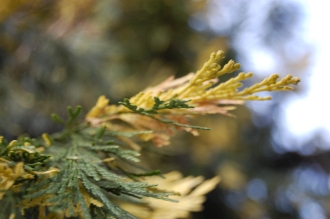Position: Full sun to partial shade
Flowering period: Spring
Soil: Moist, well drained
Eventual Height: 8m
Eventual Spread: 8m
Hardiness: 7b, 8a, 8b, 9a, 9b, 10a
Family: Aquifoliaceae
Ilex pernyi is a slow growing evergreen shrub with a conical habit. Its dark green, shiny, leathery leaves are ovate with spiny margins, up to 3cm long and 1.5cm broad and variable in shape. Its silver/ grey bark is smooth. Its white/ yellow dioecious flowers are four lobed, cross shaped, up to 7mm across and are arranged in cymes. Its fruit is a red drupe, up to 8mm across and persists on the plant throughout the winter months. Male and female plants must be planted for the female plants to produce berries.
Ilex pernyi, commonly known as Perney’s Holly, is native to south China and north Burma. In its native habitat it grows in forest or shrubby areas in valleys.
The etymological root of the binomial name Ilex is derived from the old Latin name for the Holly. Pernyi is named after Paul-Hubert Perny (1818-1907) , a french missionary.
The landscape architect may find Ilex pernyi useful as an evergreen specimen shrub with attractive winter berries. It may also be planted as an impenetrable hedge.
Ecologically, Ilex pernyi flowers are attractive to pollinating insects. The berries are attractive to some bird species. The canopy of this shrub forms an effective shelter for nesting birds.
Ilex pernyi prefers moist, fertile, well-drained soils. It prefers an acid to neutral pH of soil.
Ilex pernyi requires little maintenance. If maintaining as a hedge it should be cut in late autumn to early spring. If necessary it may also be cut in mid summer, but winter berries may be lost.











